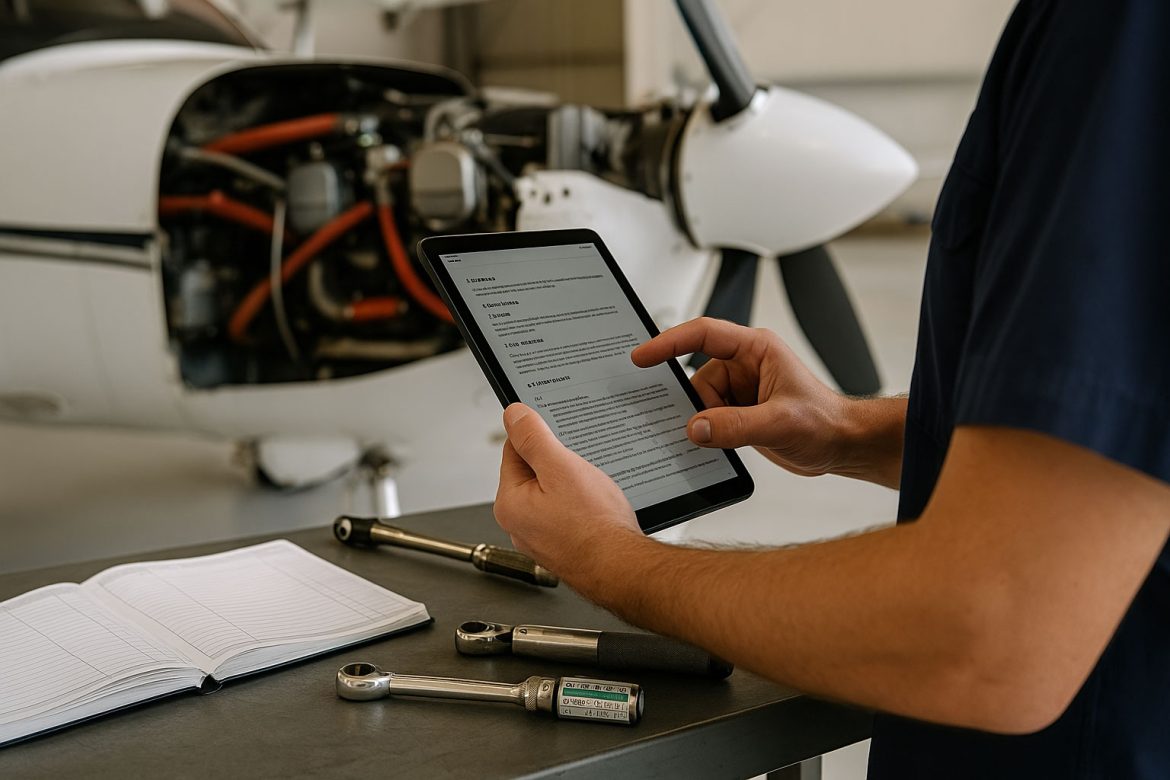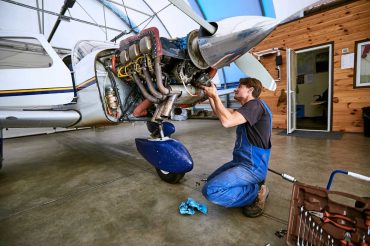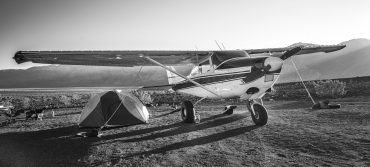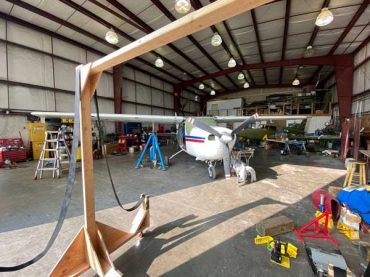From Part 43 Shop to FAA Part 145 Repair Station: What Really Changes
A practical, inside look at the regulatory, operational, and cultural shift from a traditional Part 43 maintenance shop to a certificated FAA Part 145 Repair Station, what it takes, what it costs, and why it matters.
For years, many general-aviation maintenance facilities operated solely under 14 CFR Part 43, which governs how maintenance, preventive maintenance, rebuilding, and alterations are performed on U.S.-registered aircraft. As scope, specialization, and customer expectations increase, some shops choose to evolve into an FAA Part 145 Repair Station — a company-level certificate with formal quality systems, manuals, training, and FAA oversight.
Stew’s Aero officially became a Part 145 Repair Station in 2025, formalizing processes that support consistent outcomes, transparent records, and controlled data access across airframe, powerplant, avionics, and component work.
Part 43 vs Part 145 — The Difference in Plain Language
- Part 43: Rules for how maintenance is performed. Applies to all maintenance personnel (A&P, IA) and shops.
- Part 145: Rules for who may operate as a repair station and under what system. Requires approved manuals, facilities, personnel qualifications, tool control, training, data management, and quality assurance.
Think of Part 145 as systematized compliance: the FAA certifies the organization’s ability to consistently perform Part 43 work under documented processes.
Why a Shop Chooses to Become a Part 145 Repair Station
- Capability and scope growth: Complex avionics, instrument/radio work, specialized inspections, and major alterations benefit from repair-station structure.
- Fleet and contract maintenance: Many operators prefer or require 145 providers for traceability and oversight.
- Formal quality system: Required inspections, calibration programs, and internal audits reduce risk and rework.
- Ratings and capabilities: Airframe, powerplant, propeller, radio, instrument, accessories — defined in a controlled Capabilities List.
- Customer confidence: FAA surveillance and documentation standards support defensible maintenance records.
What the FAA Requires to Issue a Part 145 Certificate
- Application: FAA Form 8310-3, requested ratings, facility data.
- Pre-application & formal meetings: With the local FSDO/MIDO; scope, management, training, and facilities are reviewed.
- Manuals:
- Repair Station Manual (RSM) — organization, roles, procedures.
- Quality Control Manual (QCM) — inspection system, calibration, records, corrective action, internal audits.
- Training Program — initial/recurrent training, qualification tracking.
- Capabilities List (CL) — the makes/models/components the station is authorized to maintain.
- Facilities, tools, and housing: Adequate work areas, lighting, environmental protection, secure parts storage; calibrated tooling with scheduled control.
- Management & key personnel: Accountable Manager, Chief Inspector, Director of Maintenance (or equivalent), and training designee with defined experience and duties.
- Data control: Current technical data (ADs, manuals, ICAs, service information) for all items on the Capabilities List.
- Demonstrations & inspections: The FAA evaluates procedures, records, parts control, and conformity before issuing the certificate and Operations Specifications (OpSpecs).
The Cultural Shift: From Individual Mechanics to a Managed System
- Controlled work orders: Every job flows through a documented order with parts traceability and sign-offs.
- Authorization under the station: Mechanics work under the repair station’s privileges; qualifications are tracked.
- Parts & materials control: Incoming inspection, tagging, vendor qualification, and shelf-life management.
- Tool control & calibration: Scheduled calibration, labeling, and audit trails.
- Internal audits: The quality system verifies that the process works — not just the aircraft.
Timeline, Cost, and Ongoing Commitment
- Typical timeline: 8–18 months, depending on readiness and FAA workload.
- Up-front investment: Manuals development, training, calibration equipment, facility updates, subscriptions, specialized tooling.
- Ongoing cost: Recurrent training, audits, manual revisions, calibration cycles, FAA surveillance, and recordkeeping.
What It Means for Aircraft Owners
- Standardized quality assurance: Required inspections and independent QC sign-offs.
- Traceability: Documented parts, processes, and approvals (e.g., STC/ICA/337) are controlled and archived.
- Defined capabilities: Ratings and Capabilities List make scope clear from the start.
- Consistent returns to service: Documented testing and conformity checks before sign-off.
The Paperwork Backbone (Beyond the Manuals)
- Revision control for manuals and procedures.
- Employee qualification and training records.
- Tool calibration logs and labels.
- Vendor qualification files and receiving inspection records.
- Work orders, parts traceability, and return-to-service documents.
- Internal audit reports and FAA correspondence.
Lessons Learned Making the Jump
- Documentation equals capability. If it is not written, trained, and auditable, it is not part of the system.
- Quality must be independent. The Chief Inspector’s authority and resources are non-negotiable.
- Data access matters. Up-to-date technical data (ADs, manuals, ICAs) is essential for scope control and conformity.
- Culture is the differentiator. A disciplined process turns good mechanics into a great organization.
Bottom Line
Transitioning from a Part 43 shop to a Part 145 Repair Station is a transformation in accountability and structure. It formalizes what competent shops strive to do: consistent work, controlled data and tools, and fully traceable records. Stew’s Aero completed this transformation in 2025, aligning our operations with the standards that owners and operators increasingly expect.
Notes
- This overview is for general information. Always consult current FAA regulations, guidance, and your local FSDO/MIDO for certification specifics.
- Timelines and costs vary by facility readiness, requested ratings, and FAA workload.





